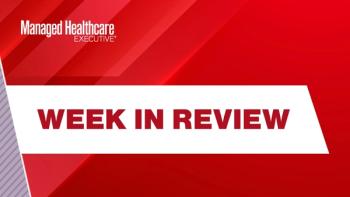
Atomoxetine (Strattera): Selective norepinephrine reuptake inhibitor approved for the maintenance treatment of ADHD in children and adolescents
New indication: Atomoxetine (Strattera), a selective norepinephrine reuptake inhibitor, was approved on May 7, 2008, for the maintenance treatment of ADHD in children and adolescents.
The mechanism by which atomoxetine exerts its effects in patients with attention-deficit/hyperactivity disorder (ADHD) is unknown but may be related to selective inhibition of the presynaptic norepinephrine transporter. This agent was previously approved for the acute treatment of ADHD in pediatric and adult patients; atomoxetine was approved on May 7, 2008, for the maintenance treatment of ADHD in children and adolescents.
Efficacy. The efficacy of atomoxetine for the maintenance treatment of ADHD in children and adolescents was evaluated in an outpatient trial. Patients (aged 6–15 y) with ADHD who demonstrated a continuous response to atomoxetine 1.2 to 1.8 mg/kg/d for approximately 4 weeks during a 10-week open-label treatment phase were randomized to continuation of their current dose (n=292) or to treatment with placebo (n=124). Patients who demonstrated continuous response to atomoxetine for approximately 8 months during this treatment phase were re-randomized to continuation of their current dose (n=81) or to treatment with placebo (n=82). In both treatment phases, patients who received continuous atomoxetine treatment demonstrated significantly longer times to relapse compared with patients who received placebo.
Safety. Atomoxetine has been associated with an increased risk of suicidal ideation among children and adolescents in clinical trials. Pediatric patients who are treated with atomoxetine should therefore be monitored closely for suicidality, clinical worsening, and unusual changes in behavior. Treatment with atomoxetine may cause severe liver injury in rare cases. Sudden death in pediatric patients with structural cardiac abnormalities or other serious heart problems has been reported in association with atomoxetine treatment. Because atomoxetine can increase blood pressure and heart rate, this agent should be used with caution in patients with hypertension, tachycardia, or cardiovascular or cerebrovascular disease. Treatment with atomoxetine can lead to treatment-emergent psychotic or manic symptoms in children and adolescents without a prior history of psychotic illness or mania. Patients treated with atomoxetine who have comorbid bipolar disorder are at risk of possible induction of a mixed/manic episode. Patients being treated with atomoxetine should be monitored for the appearance or worsening of aggressive behavior or hostility. Allergic reactions have been reported rarely in patients treated with atomoxetine. Rare cases of priapism have been reported in patients treated with atomoxetine. Weight and height gain among pediatric patients treated with atomoxetine may lag behind weight and height gain predicted by normal population data. The most common adverse events associated with atomoxetine treatment in pediatric patients include nausea, vomiting, fatigue, decreased appetite, abdominal pain, and somnolence.
Newsletter
Get the latest industry news, event updates, and more from Managed healthcare Executive.

















































